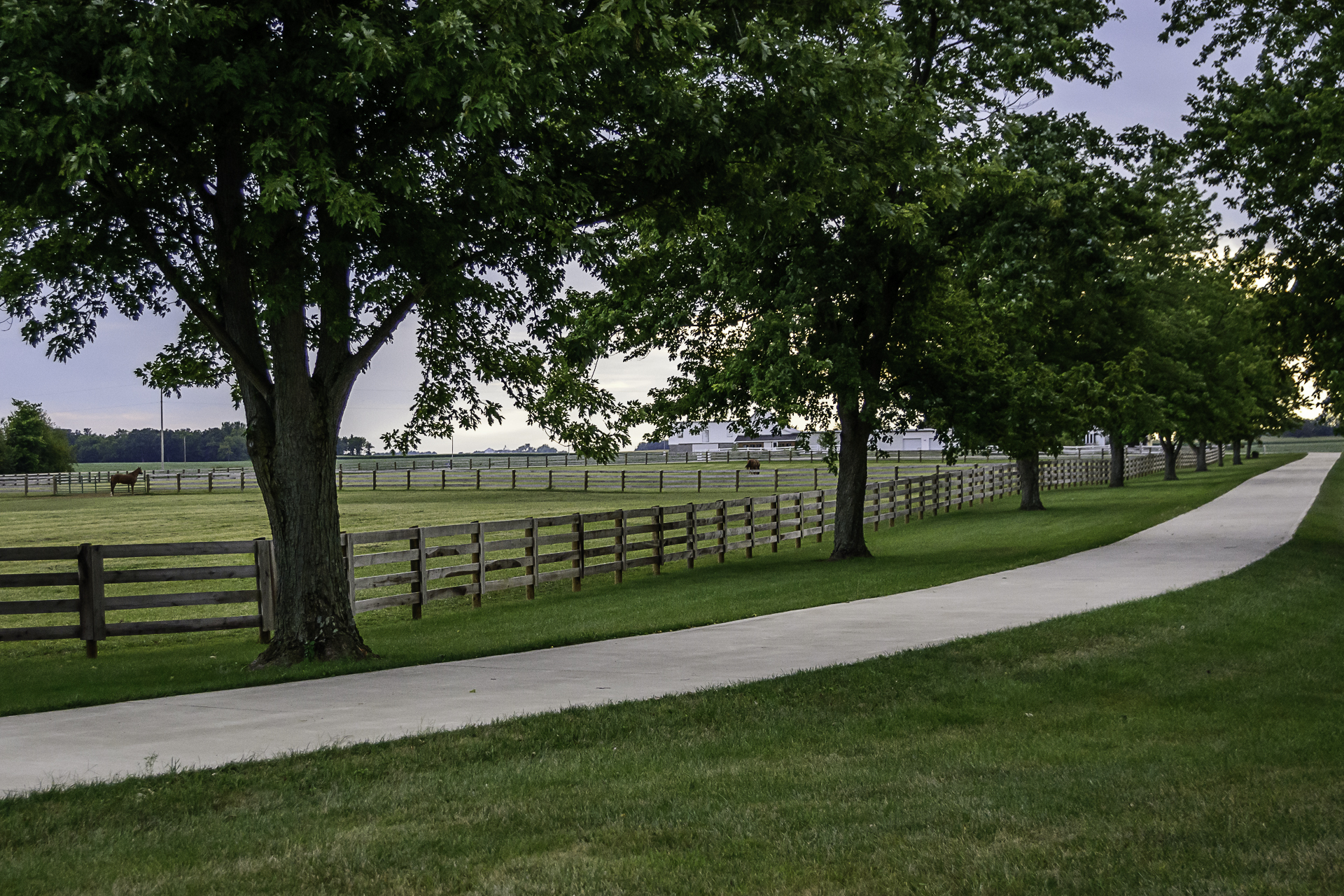By keeping their properties in the best shape possible, NRHA Professionals can make good first impressions on clients and preserve the confidence of their existing customers.
By Kristin Pitzer

Imagine, as a prospective client, visiting training facilities for a futurity prospect. One facility is immaculate: the floors are swept, tack is put away, and the overall aesthetic is just nice to look at. Another is dilapidated, with broken fencing, unkempt landscaping, and rusting equipment abandoned where it last stopped. Which would you pick to leave your prized investment?
It may seem shallow to some people, but the curb appeal of a training facility is very important in the equine business. The grounds don’t necessarily have to be elaborate—simply making the effort to maintain a facility in top shape can leave a nice impression. No matter if you’re a multimillion-dollar rider or an up-and-comer, having an aesthetically pleasing facility can help gain new clients and give a sense of security to those who are already customers.
In this three-part series, NRHA Professionals Bob Avila, Shannon Quinlan Hill, Robin Schoeller, and Mark and Shannon Rafacz share their thoughts on these topics:
Part 1: First Impressions Count
Part 2: Worth the Effort
First Impressions Count
From the moment a client drives up to a training business, what they first see determines whether they continue along the driveway or turn around and find someplace else to leave their horse. Therefore, you have one chance to make a good first impression. If your facility doesn’t appear to be safe or in working order, most clients will walk away.
“I was told when I was very young that your trucks, your trailers, your place are just like a billboard for your business,” said Avila, an NRHA Futurity Open Champion based in Scottsdale, Arizona. “When you drive into someone’s place, it’s like, ‘Wow, this is nice,’ or ‘Oh, I don’t want to leave my horse here.’ That is what people look at.”
Avila likened customers shopping for a training facility to people who are house-hunting. Houses are staged in a way to draw potential buyers inside. If someone walks into a house and immediately has a bad feeling about it, they’re not going to stay long enough to look around at whatever nice features the house possesses.
“I think anybody can put themselves in that position where you look at something and say, ‘hey, I feel comfortable leaving my kid or my horse there,’” Avila said. “If you can answer it, ‘yes,’ do it. But if you answer it, ‘no,’ go somewhere else.”
A facility doesn’t have to be “fancy” to have a nice curb appeal. Mowing the grass, weed eating, and fixing broken fences can go a long way toward presenting a property that’s well-cared-for. In turn, that can tell clients that the horses inside are also watched over with the same degree of attention.
“I think it’s important for any horse trainer, really,” said Hill of Hill Performance Horses based in Sharpsville, Pennsylvania. “You want to give off a professional, high-end, safe, clean vibe for your environment. Nobody wants to go to a barn that’s run down, messy, dirty, or unsafe. I certainly wouldn’t pay for my horse to be there.”
Robin Schoeller, an NRHA Professional based in Bloomingburg, Ohio, agreed, saying curb appeal is one of the most important things for a trainer’s business. He said if his first impression of a facility tells him the person cannot take care of their own things, it’s likely they wouldn’t be able to care for his horse properly, either.
“I’m just a very particular person as far as keeping everything clean and neat outside, around the barn, and on the property,” Schoeller said, who has the Aristotle quote, “We are what we repeatedly do. Excellence, therefore, is not an act, but a habit,” hanging next to his office. “I like everything mowed and weeded. I think it benefits the overall appearance. And if you walk into my barn, I try to keep it as clean as I can.
“It’s hard to clean up every day, but it’s part of our routine,” Schoeller added. “The overall appearance, to me, is very important, and I think my clients appreciate it, too.”
Schoeller said everything has its place in his barn, from bridles to saddles to polo wraps. Florida-based trainers Mark and Shannon Rafacz go one step further to cut down on clutter by allowing their clients to only leave saddles, pads, and bridles at their facility. For everything else—grooming supplies, girths, polo wraps—the Rafaczes charge a biannual fee so they can provide those items and keep them put away in their designated spots. That way, they aren’t dealing with individual tack trunks everywhere.
“We try to keep all of our tack rooms in order,” Shannon Rafacz said. “Mark is a firm believer in making sure everything has a place and everything’s organized. It’s very much a working barn, but it’s generally always in order. We work hard to make sure that the grass is always cut down, and it just looks good because first impressions are everything. I think that’s the bottom line in life.”
Read the rest of this series at the links above.



